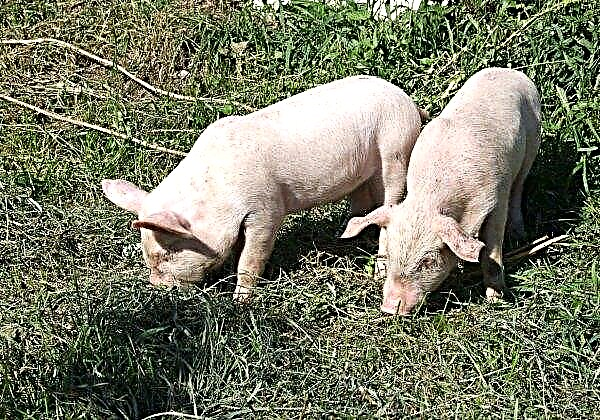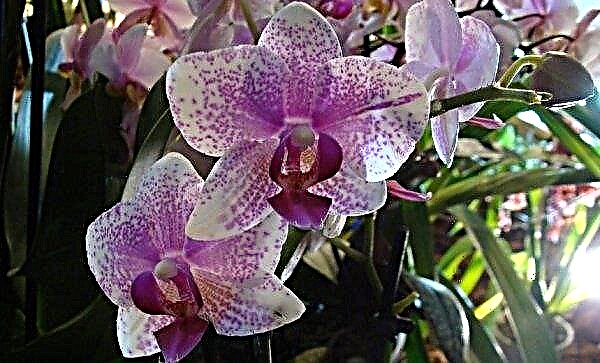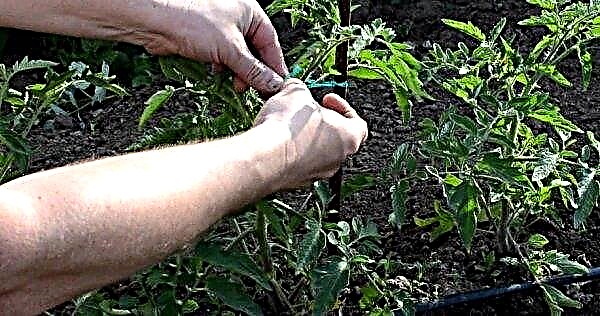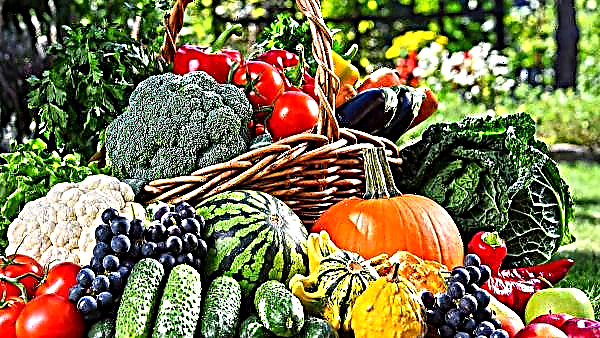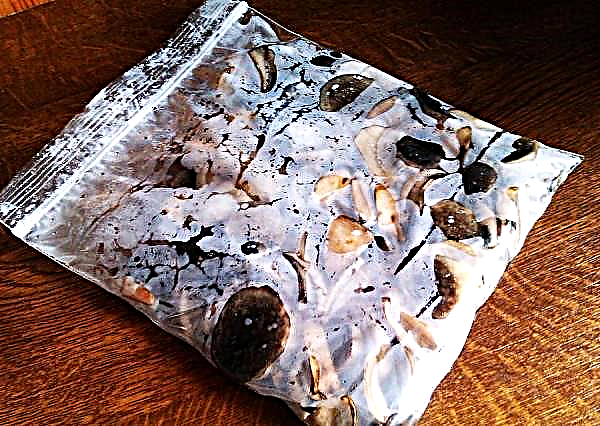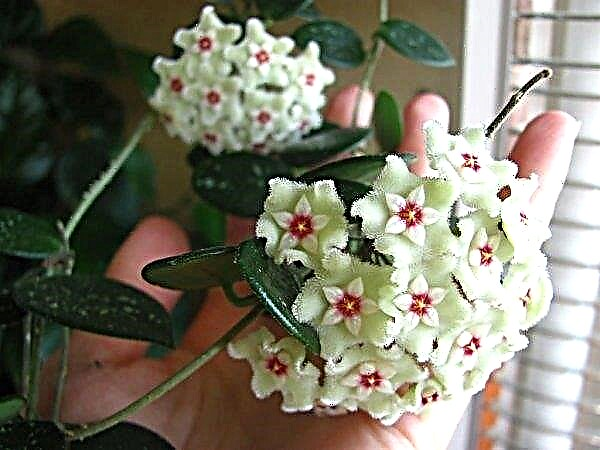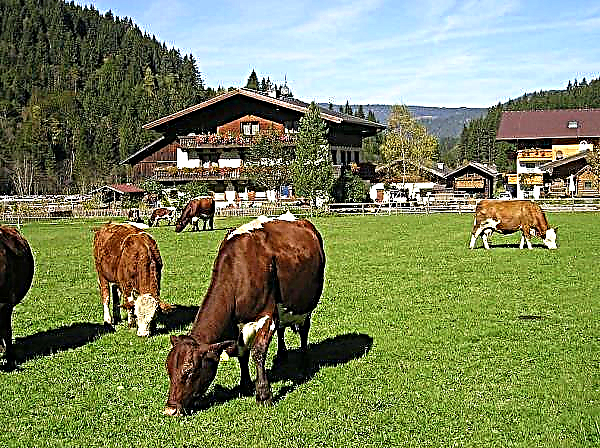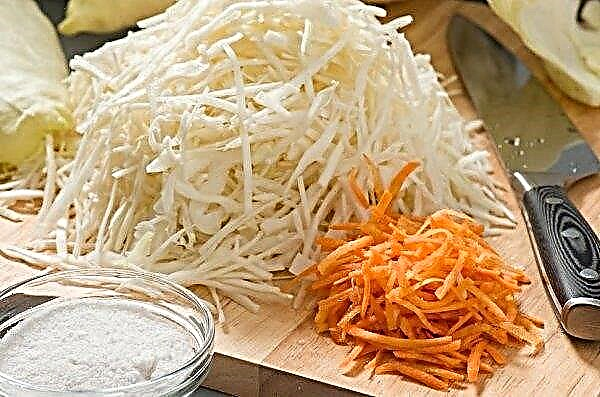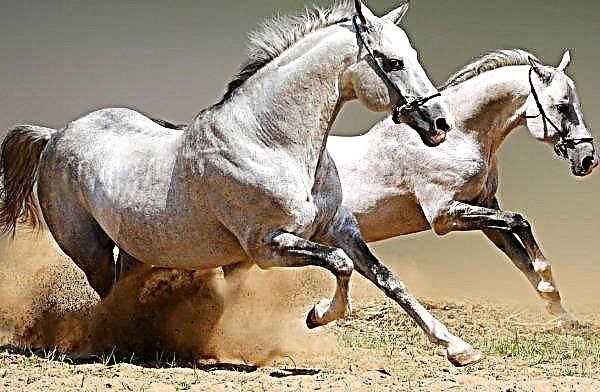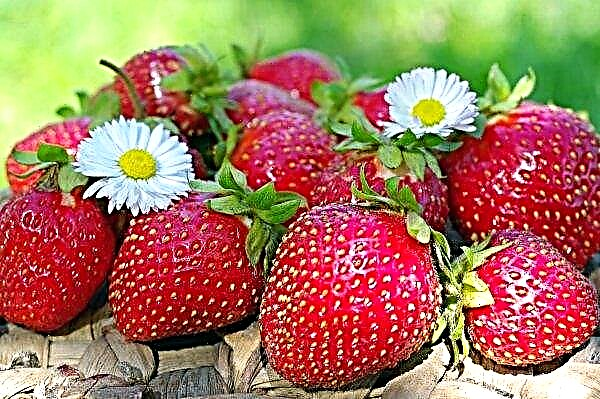Almost all owners of summer cottages have a special place for planting pepper, which is one of the three most popular vegetables in our country. Due to its characteristics, the variety Ramiro fell in love with many gardeners. It is about the features of agricultural technology of this variety that will be discussed in the review.
Variety selection and description
The birthplace of pepper Ramiro is Italy, but, due to its unpretentiousness, as well as external and taste characteristics, this variety is actively grown throughout Europe and even in Latin America. He was also included in the State Register of the Russian Federation.
Variety Ramiro can be planted not only in greenhouses, but also on the open ground of almost all regions. The full period from the moment of sowing the seeds to the ripening of the first fruits is an average of 120 days, however, in the conditions of proper care, the vegetation period can come after 100 days.
The bushes of this pepper are tall and strong, with a well-developed root system. The stem height can reach 100 cm. The leaves are large, dark green in color. One bush gives at least 10 fruits, the weight of which varies from 100 to 150 g.
The color of peppers can be different: red, yellow or green. The shape of the fruit is elongated, with a rounded tip. Peppers can reach a length of about 30 cm. This variety is smaller than the usual bell peppers. Due to the specific appearance of the fruits of this variety, which resembles hot peppers, many are wondering: hot pepper Ramiro or not? This variety is not only mild, but also tastes much sweeter than many types of familiar bell peppers. It is perfectly applied both fresh and in cooking and preservation.
Due to the specific appearance of the fruits of this variety, which resembles hot peppers, many are wondering: hot pepper Ramiro or not? This variety is not only mild, but also tastes much sweeter than many types of familiar bell peppers. It is perfectly applied both fresh and in cooking and preservation.
Did you know? By the level of vitamin A content, sweet pepper even surpasses carrots.
Advantages and disadvantages
- Among the main advantages of the Ramiro variety are:
- tall bushes and high yields;
- ripening both in greenhouse conditions and in open ground;
- high taste;
- unpretentiousness in leaving.
- The disadvantages of this pepper are minor:
- thinness of the walls is noted;
- growing this variety is only possible in seedlings.
How to grow seedlings on your own
The quality and quantity of the future crop directly depends on correctly selected seeds and seedling growing conditions. That is why it is so important to adhere to some recommendations.
Optimal timing
Depending on the method of growing sweet pepper, the timing of sowing seeds for seedlings will vary slightly:
- for growing pepper in greenhouse conditions, seeds are sown in mid-February;
- for outdoor cultivation, sowing is postponed to the last week of February or the first week of March.
Soil and container for growing
For sowing seeds for seedlings, a special soil mixture is used, which consists of humus, garden soil and sand, in a ratio of 2: 1: 1, or, as an alternative, peat, humus and sand in equal parts. In the same soil, it is recommended to add 1 tablespoon of wood ash, which is used to saturate the soil with nutrients.
Also, before sowing seeds, the prepared soil is decontaminated by pouring boiling water or calcining in the oven (or microwave). This procedure helps prevent undesirable contamination of future peppers with fungal infections.
One of the main issues in preparing for growing seedlings remains the choice of the correct capacity for sowing.
Among the most popular options stand out:
- Seedling Boxes - due to the location of plants in one place, it is very convenient to use such a container. However, in this case, there is a need for thinning and picking procedures, which are extremely undesirable for the root system of pepper.
- Peat pills - Simply put, peat tanks that are saturated with nutrients and do not require diving or seating. Easy to use, but expensive and cannot be reused.
- Plastic cups - The most commonly used containers, because they are not costly and practical. Before use, it is imperative to prepare drainage holes for the outflow of excess water.



Seed selection and preparation
The key to the high quality of the future crop is, first and foremost, the right seeds.
When selecting material, it is recommended to focus only on verified sources of sales, and when buying, carefully read the signs on the packaging, namely, on the date of collection of seeds - to obtain high-quality seedlings, the storage period should not exceed 3 years.
Before sowing, all seeds are rejected - for this they are immersed in salted water for half an hour. All seeds that float to the surface during this period of time are considered empty and are separated from the total planting material.
The rest undergo a disinfection procedure, which eliminates possible viruses and infections contained inside the seeds. To do this, the seeds are soaked for 20 minutes in a pink solution of potassium permanganate, and then thoroughly washed and dried.
The treatment procedure with any growth stimulants, according to the instructions on the package, also gives good results.
To accelerate the growth of future seedlings and obtain more stable shoots, immediately before planting in the soil, the seeds should be germinated. To do this, they are placed in any natural wet tissue, the moisture of which is subsequently constantly maintained by the atomizer.
The air temperature should not fall below + 25 ° C. During the first 5–7 days, the seeds produce the first sprouts. Germinated material is ready for sowing as soon as the length of the shoots is about 2 mm.
Sowing seeds
The pattern of sowing seeds will vary slightly taking into account the future pick or its absence. It should be noted that in general, the root system of pepper does not respond very well to various interventions, and the whole process somewhat slows down the overall development of seedlings.
With pick
In this case, a common tank is used, which is filled up to half its height with moistened soil. Seeds are laid out according to a 2 × 2 pattern and sprinkled on top with 5 cm soil, which is then compacted. The picking process is carried out at the stage of two formed sheets.
Without pick
When growing seedlings without picking, small containers are most often used, the diameter of which does not exceed 8 cm. In such cases, it is recommended to sow several seeds at once, and when germinating, remove weak sprouts. Seeds are immersed to a depth of about 2 cm and sprinkled with soil. Watering must be carried out very carefully, in order to avoid leaching of seeds.
After sowing, until the appearance of the first shoots, the containers are covered with glass or film. The optimum temperature of this period is +23 ... + 25 ° С.
Seedling Care
For full development, seedlings sprouts first of all require a large amount of natural light, for which the seedling tank daily turns to the light source in different directions. Seedlings should be protected from direct sunlight, temperature extremes, as well as drafts. Watering is recommended to be carried out 1 time in 3 days.
Seedlings should be protected from direct sunlight, temperature extremes, as well as drafts. Watering is recommended to be carried out 1 time in 3 days.
Important! Frequent watering can provoke thinning of the stem, which will have negative consequences when transplanting seedlings.
When three full leaves appear on the stem, the seedlings are first fertilized with a solution of 5 l of water with the addition of 15 g of superphosphates and 5 g of potash fertilizers. After about 2 weeks, when 5 leaves are formed on the stem, top dressing is repeated, doubling the concentration of nutrients.
Seedling hardening
Given the general thermophilicity of pepper, as well as its acute response to worsening weather conditions, seedling hardening is used. This procedure allows you to develop plant resistance to any climatic changes, as well as strengthen immunity to various diseases.
Hardening lasts 2 weeks, which precede the landing. During this period, the seedlings are carried out to open air, the temperature of which is +12 ... + 14 ° С. The first days, the time spent on the street does not exceed several hours, and the seedlings themselves are protected from direct sunlight.
In the following days, the period of stay in the fresh air is constantly increasing by 1–1.5, of which part of the allotted time is set for seedlings under the sun. As the date of planting approaches, the sprouts spend the whole day on the street, and before planting, and several nights.
How and when to plant seedlings in a permanent place
By the date set in advance, after passing all the additional procedures, the seedlings are completely ready for planting in open ground.
Optimal timing
The most optimal time for planting seedlings is the period of the appearance of the first ovaries on plants. You should also take into account the air temperature, which should not be lower than + 18 ° С, and the soil - the earth should warm up to at least + 11 ° С. Most often, this weather is observed from late May to early June, depending on the region.
Important! Many gardeners and gardeners during planting are guided by the lunar calendar, however, the facts of the influence of the moon on crops are not scientifically confirmed and are often disproved.
Site selection
Pepper is an unpretentious crop that will produce a good crop in any soil, but if there is a choice, it is worth recovering on sandy or loamy soils.
For the full formation of the plant, avoid excessive nitrogen content in the soil, as well as monitor the acidity of the soil, which should vary within pH 6–6.6. When it is lowered, calcareous materials such as chalk, lime, etc. are introduced into the soil.
It is also worth considering that pepper will develop much worse if in the selected area it is observed:
- constant winds;
- lack of proper lighting;
- stagnation of water in the soil.
To improve crop yields, beds for planting peppers need crop rotation. When choosing a place, it is better to use last year's beds of beets, carrots, cabbage, any bean or pumpkin crops. Do not plant fennel and cucumbers next to pepper.
Scheme and depth of landing
Rows of pepper should be at least 50 cm apart. The width of the holes and the distance between them are 8 cm and 40 cm, respectively. When digging holes, you need to take into account the size of the rhizome, and when planting, make sure that the neck is at ground level. It is recommended to add a little phosphorus, nitrogen and potassium to each well.
Landing is carried out in several stages:
- The plant is carefully removed from the tank, always with a lump of earth on the roots.
- The hole is pre-watered.
- Seedlings are lowered into the hole, sprinkled with earth and slightly tamped.
- The plant is watered with water at room temperature.
How to care in the open ground
Ramiro pepper refers to unpretentious varieties that give a high-quality crop with minimal effort. You just need to follow a few recommendations.
Watering
Peppers grow well and are less sick in moderately moist soil. Before flowering, Ramiro is watered by sprinkling, i.e. by means of a watering can or spray. After the beginning of flowering, watering is carried out exclusively under the root of the plant, avoiding the ingress of water on the leaves.
The optimal period for irrigation is considered to be evening time, when the soil has cooled sufficiently, with settled water. From time to time, it is recommended to add a little peroxide to the water - for additional oxygen enrichment. One bush of a plant requires about 5 liters of water 2-3 times a week.
One bush of a plant requires about 5 liters of water 2-3 times a week.
Did you know? Pepper, like chocolate, provokes the release of endorphins into the blood, which are also called "hormones of happiness."
Soil care
An important point in the cultivation of pepper is the constant care of the soil beds.
Mandatory procedures include:
- Soil loosening - thanks to this process, the soil and root system of pepper is enriched with oxygen, which is the basis for the proper formation of the whole plant.
- Weed removal (weeding) - retains the right amount of moisture and nutrients in the soil.
- Mulching - protects the soil from drying out and hypothermia, limits the growth of weed grass.
Top dressing
In the process of pepper growth, to increase the quantity and quality of the crop, the following fertilizers are recommended:
- after two weeks after transplanting the seedlings to a permanent place, the first top dressing is carried out - for this purpose either 20 g of urea with 50 g of superphosphates and 25 g of potassium sulfate is used, or a solution of bird droppings in a ratio of 1:20;
- during the first flowering, peppers are fertilized with cow dung in a ratio of 1:10, and the beds are sprinkled with ash;
- during fruiting, additional bait is added in the form of a solution of chicken droppings.
 It is better to fertilize with watering, in an amount of 1-2 liters.
It is better to fertilize with watering, in an amount of 1-2 liters.Bushes garter
Garter peppers due to the fragility of the stems, especially during fruiting, many varieties of this culture. During rain or gusty winds, plants, even closely planted, can be broken. Most often, supports are used for tying, to which not only the main stem, but all branches separately are carefully attached.
Due to its taste and absolute unpretentiousness in care, Ramiro variety has earned well-deserved popularity among the owners of suburban areas. High-quality and rich harvest of this pepper, even with minimal effort, constantly attracts both professional vegetable growers and beginner gardeners.

